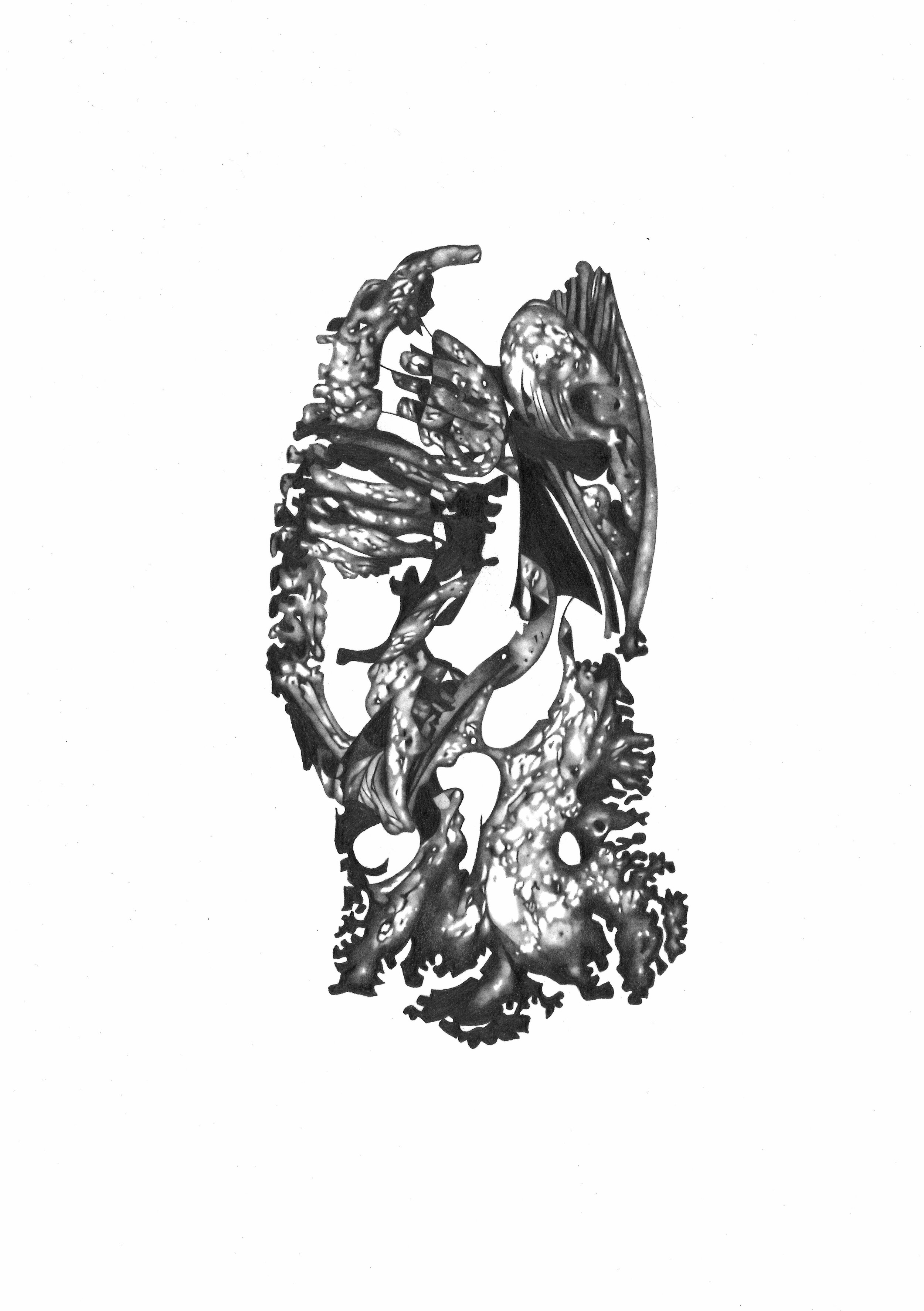In 1677, Robert Plot, the English naturalist, first Professor of Chemistry at the University of Oxford, and first keeper of the Ashmolean Museum, referred to fossils as “Lapides Sui Generis,” which means “stones unto themselves.” Plot’s belief was that fossils were not the remains of once-living organisms, but stones naturally produced by some extraordinary “plastic virtue” directed by God to decorate the inner parts of the earth in the same way flowers beautify its surface. These drawings combine fossil forms, cartographic elements and surface mapping abstraction.









